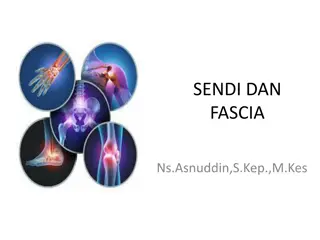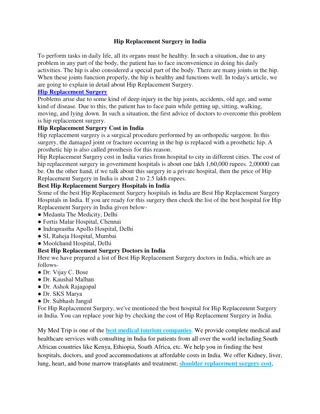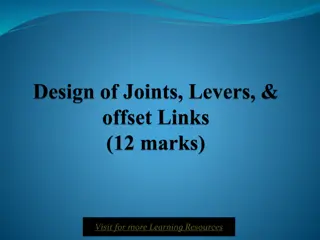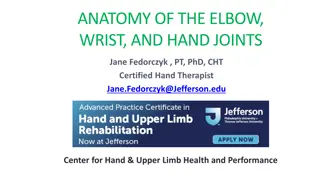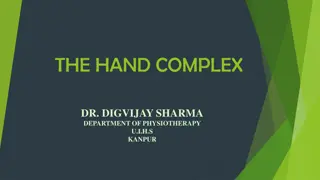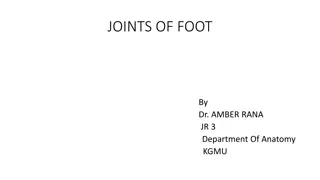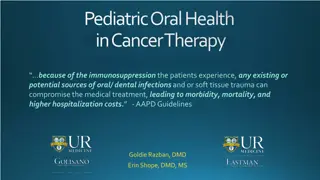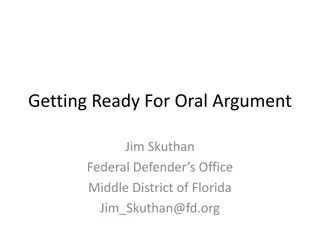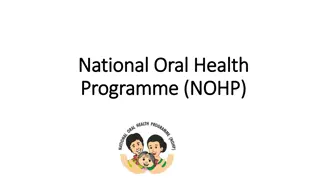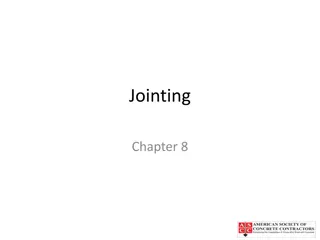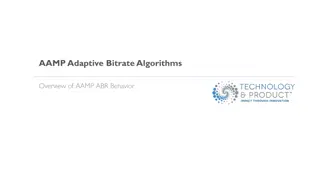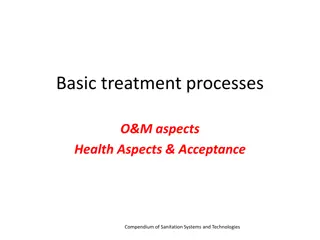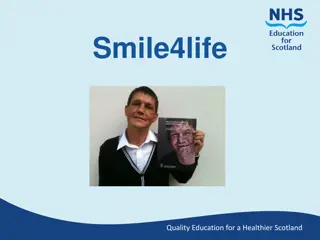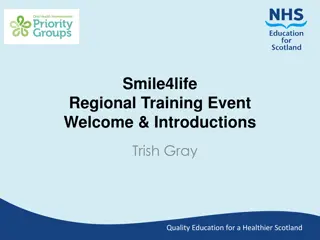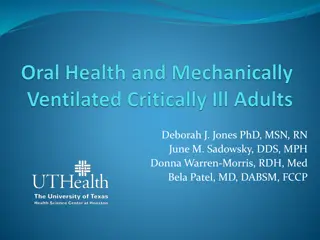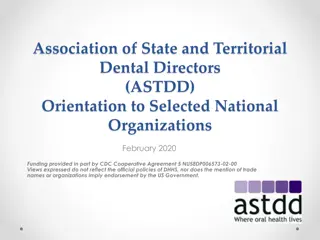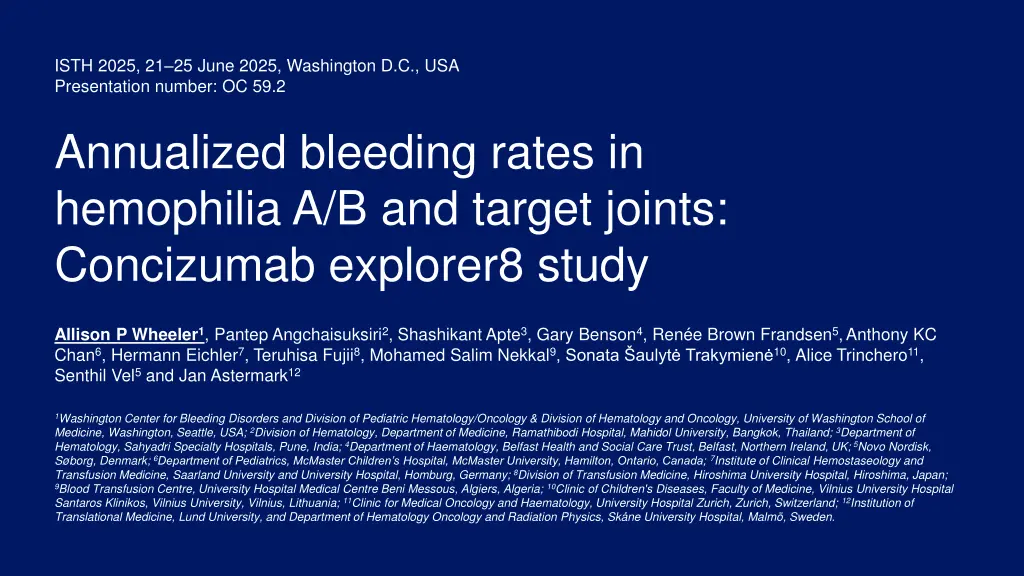
Bleeding Rates in Hemophilia A/B and Target Joints Study
Explore the annualized bleeding rates in hemophilia A/B and target joints through the Concizumab explorer8 study presented at ISTH 2025 in Washington D.C., USA. Learn about the researchers, their affiliations, and the indications of Concizumab for hemophilia patients with and without inhibitors. Disclosure of conflicts of interest for the presenting author is also included.
Download Presentation

Please find below an Image/Link to download the presentation.
The content on the website is provided AS IS for your information and personal use only. It may not be sold, licensed, or shared on other websites without obtaining consent from the author. If you encounter any issues during the download, it is possible that the publisher has removed the file from their server.
You are allowed to download the files provided on this website for personal or commercial use, subject to the condition that they are used lawfully. All files are the property of their respective owners.
The content on the website is provided AS IS for your information and personal use only. It may not be sold, licensed, or shared on other websites without obtaining consent from the author.
E N D
Presentation Transcript
ISTH 2025, 2125 June 2025, Washington D.C., USA Presentation number: OC 59.2 Annualized bleeding rates in hemophilia A/B and target joints: Concizumab explorer8 study Allison P Wheeler1, Pantep Angchaisuksiri2, Shashikant Apte3, Gary Benson4, Ren e Brown Frandsen5,Anthony KC Chan6, Hermann Eichler7, Teruhisa Fujii8, Mohamed Salim Nekkal9, Sonata aulyt Trakymien 10, Alice Trinchero11, Senthil Vel5and Jan Astermark12 1Washington Center for Bleeding Disorders and Division of Pediatric Hematology/Oncology & Division of Hematology and Oncology, University of Washington School of Medicine, Washington, Seattle, USA; 2Division of Hematology, Department of Medicine, Ramathibodi Hospital, Mahidol University, Bangkok, Thailand; 3Department of Hematology, Sahyadri Specialty Hospitals, Pune, India; 4Department of Haematology, Belfast Health and Social Care Trust, Belfast, Northern Ireland, UK;5Novo Nordisk, S borg, Denmark; 6Department of Pediatrics, McMaster Children s Hospital, McMaster University, Hamilton, Ontario, Canada; 7Institute of Clinical Hemostaseology and Transfusion Medicine, Saarland University and University Hospital, Homburg, Germany; 8Division of Transfusion Medicine, Hiroshima University Hospital, Hiroshima, Japan; 9Blood Transfusion Centre, University Hospital Medical Centre Beni Messous, Algiers, Algeria; 10Clinic of Children's Diseases, Faculty of Medicine, Vilnius University Hospital Santaros Klinikos, Vilnius University, Vilnius, Lithuania; 11Clinic for Medical Oncology and Haematology, University Hospital Zurich, Zurich, Switzerland; 12Institution of Translational Medicine, Lund University, and Department of Hematology Oncology and Radiation Physics, Sk ne University Hospital, Malm , Sweden.
Disclaimer Concizumab is indicated for hemophilia A and B with inhibitors by the FDA, in Europe, Australia and Japan. It is also indicated for hemophilia A and B without inhibitors in Japan and Australia. Local label may vary, please always check your local prescribing information Concizumab is currently not indicated for hemophilia A and B without inhibitors or any other use by the FDA. There is no guarantee that it will become available commercially for any use under clinical investigation
Disclosures for Allison P Wheeler Conflict of interest information for the presenting author Type of affiliation Organization name Grants/research supports Octapharma Honoraria/consultation fees/ advisory boards Sanofi, Bayer, CSL Behring, Genentech, Genzyme, Novo Nordisk, Pfizer, Sanofi, Takeda, Vega Therapeutics
Target joints in patients with hemophilia In patients with hemophilia, joints represent the most common location for bleeds1 A target joint is described as one that experiences repeated bleeding, and was defined as 3 spontaneous bleeds into a single joint within a consecutive 6-month period2 Repeated bleeding into target joints results in hemophilic arthropathy and reduced quality of life3 In severe hemophilia, prophylaxis is the current standard of care,4 started early in life to prevent joint damage and progression to hemophilic arthropathy 1. van Vulpen LFD et al. Haemophilia. 2018;24(6):44 49; 2. Blanchette VS et al. J Thromb Haemost. 2014;12(11):1935 39 3. Gualtierotti R et al. JTH. 2021;19(9):2112-2121; 4. Srivastava A et al. WFH Guidelines for the Management of Hemophilia, 3rd edition. 2020;26(S6): 1-158.
TFPI Concizumab K1 Concizumab: an anti-TFPI monoclonal antibody K2 K3 Concizumab is intended for hemophilia A/B with and without inhibitors explorer8 (NCT04082429) is a phase 3 prospective, multicenter, open-label study evaluating the efficacy and safety of concizumab prophylaxis in patients with hemophilia A/B without inhibitors Approved in the US for once- daily, subcutaneous prophylaxis in hemophilia A/B with inhibitors Aim of the post-hoc analysis: To assess the annualized bleeding rate in patients with hemophilia A or B without inhibitors and with or without target joints at baseline in the phase 3 explorer8 study explorer8 (NCT04082429). K1/K2/K3, Kunitz 1/2/3; TFPI, tissue-factor pathrway-inhibitor. Chowdary P et al. Lancet Haematol 2024;11(12): e891-e904.
explorer8 study design Male patients aged 12 years with hemophilia A/B in 4 arms: Screening (3 weeks) Main part (24 32 weeks) Extension (Up to 353 weeks) No PPX (OnD) n=21 1 CZM PPXa Patients on OnD CZM dosing Patients transferred from phase 2 non- inhibitor study (explorer5) before treatment pause 2 Day 1: loading dose (1.0 mg/kg) Day 2 onwards: CZM PPX (0.20 mg/kg daily) CZM PPXb Arm 2: n=42 Arms 3/4: n=85 3 CZM PPXb 4 Other patientsc Dose adjustment period 8 weeks 32-week cut-offd (confirmatory analysis cut-off) 56-week cut-offd Baseline data collection explorer8 (NCT04082429). Treatment paused (2020/03 2020/08) due to non-fatal thromboembolic events; restarted after implementation of new dosing regimen and guidance on mild and moderate breakthrough bleed management with lowest dose of factor product or bypassing agent while on concizumab. aDose adjustment period followed by maintenance dose. bThe individual maintenance doses were 0.15, 0.20 or 0.25 mg/kg concizumab. cPatients on PPX and additional patients on OnD treatment. d32- and 56-week cut-offs were defined as when all patients in the concizumab arms had completed their 32- or 56-week visit or permanently discontinued treatment. CZM, concizumab; HA, hemophilia A; HB, hemophilia B; OnD, on-demand; PPX, prophylaxis.
Estimated mean ABR was lower with concizumab than on- demand treatment in patients with and without target joints at baseline in explorer8 32-week cut-off With target joints at baseline On-demand Without target joints at baseline On-demand CZM PPX CZM PPX (arm 1) 17 14.9 [9.30; 23.72] (arm 2) 37 3.4 [2.40; 4.94] (arm 1) 4 26.9 [10.47; 68.98] (arm 2) 5 0.4 [0.07; 2.25] n Estimated mean ABR [95% CI] At the 32-week cut-off, there was a 77% and 99% reduction in treated spontaneous and traumatic bleeding episodes with concizumab vs on-demand in patients with and without target joints, respectively ABR ratio [95% CI] 0.23 [0.13; 0.40] 0.01 [0.00; 0.13] % reduction P-value 77% reduction <0.001 99% reduction <0.001 Zero treated spontaneous and traumatic bleeding episodes, n (%) 1 (5.9%) 13 (35.1%) 0 3 (60.0%) Zero treated spontaneous and traumatic target joint bleeding episodes, n (%) 2 (11.8%) 17 (45.9%) N/Aa N/Aa explorer8 (NCT04082429). Target joint is defined as having three or more spontaneous bleeds into a single joint within a consecutive 6-month period. P-values are for two-sided tests of no difference from 1. Bleeding endpoints are analyzed using a negative binomial regression model with the logarithm of the length of the observation period included (in years) as offset with treatment, type of hemophilia and bleeding frequency prior to screening as factors. The 32-week cut-off was defined as when all patients in the concizumab arms had completed the visit after 32 weeks, or permanently discontinued treatment. Results for estimated mean ABRs are presented for arm 2 vs arm 1. aTarget joint bleeding episodes are bleeding episodes in target joints that were identified at baseline, and hence N/A if target joints were not present at baseline. ABR, annualized bleeding rate; CI, confidence interval; CZM, concizumab; n, number of patients; N/A, not applicable; PPX, prophylaxis.
Estimated mean ABR was lower with concizumab than on- demand treatment in patients with and without target joints at baseline in explorer8 32-week cut-off With target joints at baseline On-demand Without target joints at baseline On-demand CZM PPX CZM PPX (arm 1) 17 14.9 [9.30; 23.72] (arm 2) 37 3.4 [2.40; 4.94] (arm 1) 4 26.9 [10.47; 68.98] (arm 2) 5 0.4 [0.07; 2.25] n Estimated mean ABR [95% CI] ABR ratio [95% CI] 0.23 [0.13; 0.40] 0.01 [0.00; 0.13] % reduction P-value Zero treated spontaneous and traumatic bleeding episodes, n (%) 77% reduction <0.001 99% reduction <0.001 At the 32-week cut-off, proportion of patients with zero bleeds was numerically higher with concizumab, irrespective of target joint status at baseline in explorer8 1 (5.9%) 13 (35.1%) 0 3 (60.0%) Zero treated spontaneous and traumatic target joint bleeding episodes, n (%) 2 (11.8%) 17 (45.9%) N/Aa N/Aa explorer8 (NCT04082429). Target joint is defined as having three or more spontaneous bleeds into a single joint within a consecutive 6-month period. P-values are for two-sided tests of no difference from 1. Bleeding endpoints are analyzed using a negative binomial regression model with the logarithm of the length of the observation period included (in years) as offset with treatment, type of hemophilia and bleeding frequency prior to screening as factors. The 32-week cut-off was defined as when all patients in the concizumab arms had completed the visit after 32 weeks, or permanently discontinued treatment. Results for estimated mean ABRs are presented for arm 2 vs arm 1. aTarget joint bleeding episodes are bleeding episodes in target joints that were identified at baseline, and hence N/A if target joints were not present at baseline. ABR, annualized bleeding rate; CI, confidence interval; CZM, concizumab; n, number of patients; N/A, not applicable; PPX, prophylaxis.
Low median ABRs were maintained with concizumab prophylaxis in arms 1 4 at the 56-week cut-off in explorer8 and 32-week 56-week cut-offs With target joints at baseline 32-week cut-off Without target joints at baseline 32-week cut-off 56-week cut-off 56-week cut-off n 67 77 Median ABR (interquartile range) All treated and untreated spontaneous and traumatic bleeding episodes 3.3 (0.7 7.8) 3.6 (1.1 7.3) 3.0 (0.6 5.9) 2.4 (0.9 6.5) Treated spontaneous and traumatic bleeding episodes 3.2 (0.0 6.4) 2.9 (0.6 6.4) 1.6 (0.0 4.5) 1.0 (0.0 4.4) Treated spontaneous and traumatic joint 1.9 (0.0 6.4) 2.7 (0.0 4.9) 0.0 (0.0 1.9) 0.5 (0.0 1.9) bleeding episodes Treated spontaneous and traumatic target joint bleeding episodes N/Aa 0.0 (0.0 3.3) 0.9 (0.0 3.4) N/Aa explorer8 (NCT04082429). Target joint is defined as having three or more spontaneous bleeds into a single joint within a consecutive 6-month period. Target joint bleeding episodes are bleeding episodes in target joints at baseline. The 32- and 56-week cut-offs were defined as when all patients in arms 1 and 2 had completed the visit after 32 or 56 weeks respectively, or permanently discontinued treatment. aTarget joint bleeding episodes are bleeding episodes in target joints that were identified at baseline, and hence N/A if target joints were not present at baseline. ABR, annualized bleeding rate; n, number of patients; N/A, not applicable.
Overall safety data at the explorer8 56-week cut-off showed no new safety findings 56-week cut-off 56-week cut-off (concizumab PPX, arms 1 4)a Events n Rate Patients n % 100 Events/PYE N in safety analysis set Patient years of exposure (years) Serious adverse events Fatal adverse events Adverse events leading to drug withdrawal Adverse events of special interest 151 193.6 0.2 0.0 0.0 20 1 6 13.2 0.7 4.0 30 1 8 Thromboembolic events prior to treatment pause1 2 1.3 4 0.0 Thromboembolic events after treatment restart until 56-week cut-offb Adverse events with additional data collection Hypersensitivity type reactions Injection site reactions Anti-concizumab antibodiesc (non-neutralizing) 0 0 26 21 17.2 13.9 46 0.2 explorer8 (NCT04082429). aWhile patients were on concizumab prophylaxis including initial dosing regimen before treatment pause (134 patients in arms 2 4 were exposed to concizumab before and/or after treatment pause, 17 patients in arm 1 switched to concizumab prophylaxis after the main part of the study. bAfter 56-week cut-off, 1 non-fatal thromboembolic event (cerebral infarction) was reported in 1 patient (causality: unlikely related to concizumab as judged by investigator). cPatients had low-titer anti-concizumab antibodies with no apparent clinical impact on bleeds, adverse events or PK/PD. Impact of anti-concizumab antibodies on PK/PD was inconclusive in one patient. OnD, on-demand; PD, pharmacodynamic; PK, pharmacokinetic; PPX, prophylaxis; PYE, patient years of exposure. 1. Chowdary P et al. Lancet Haematol 2024; 11(12): e891-e904.
Conclusions In patients with hemophilia A/B in explorer8, once-daily, subcutaneous concizumab prophylaxis effectively reduced ABR vs on-demand, independent of target joint presence at baseline Low ABRs with concizumab prophylaxis were maintained at the 56-week cut-off Concizumab prophylaxis showed a favorable safety profile and was well tolerated in patients with hemophilia A/B explorer8 (NCT04082429). ABR, annualized bleeding rate.
The authors thank the patients, their families and all study investigators for their participation and support The explorer8 study (NCT04082429) was sponsored by Novo Nordisk A/S (Denmark) and is registered with ClinicalTrials.gov Medical writing support was provided by Ashfield MedComms GmbH (Mannheim, Germany), an Inizio company Thank you for your attention!



